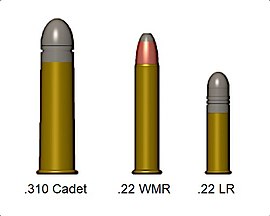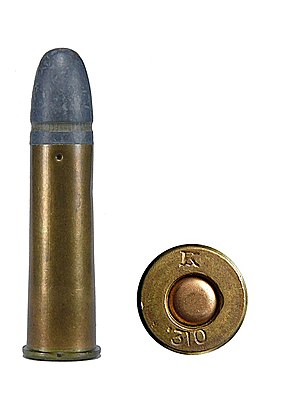Handloading, or reloading, is the practice of making firearm cartridges by assembling the individual components, rather than purchasing mass-assembled, factory-loaded ammunition.

In firearm designs, the term single-shot refers to guns that can hold only a single round of ammunition inside and thus must be reloaded manually after every shot. Compared to multi-shot repeating firearms ("repeaters"), single-shot designs have no moving parts other than the trigger, hammer/firing pin or frizzen, and therefore do not need a sizable receiver behind the barrel to accommodate a moving action, making them far less complex and more robust than revolvers or magazine/belt-fed firearms, but also with much slower rates of fire.

A cartridge, also known as a round, is a type of pre-assembled firearm ammunition packaging a projectile, a propellant substance and an ignition device (primer) within a metallic, paper, or plastic case that is precisely made to fit within the barrel chamber of a breechloading gun, for convenient transportation and handling during shooting. Although in popular usage the term "bullet" is often used to refer to a complete cartridge, the correct usage only refers to the projectile.

In guns, particularly firearms, but not artillery, where a different definition may apply, caliber is the specified nominal internal diameter of the gun barrel bore – regardless of how or where the bore is measured and whether the finished bore matches that specification. It is measured in inches or in millimeters. In the United States it is expressed in hundredths of an inch; in the United Kingdom in thousandths; and elsewhere in millimeters. For example, a US "45 caliber" firearm has a barrel diameter of roughly 0.45 inches (11 mm). Barrel diameters can also be expressed using metric dimensions. For example, a "9 mm pistol" has a barrel diameter of about 9 millimeters. Since metric and US customary units do not convert evenly at this scale, metric conversions of caliber measured in decimal inches are typically approximations of the precise specifications in non-metric units, and vice versa.

Rimfire ammunition is a type of firearm metallic cartridge whose primer is located within a hollow circumferential rim protruding from the base of its casing. When fired, the gun's firing pin will strike and crush the rim against the edge of the barrel breech, sparking the primer compound within the rim, and in turn ignite the propellant within the case. Invented in 1845, by Louis-Nicolas Flobert, the first rimfire metallic cartridge was the .22 BB Cap cartridge, which consisted of a percussion cap with a bullet attached to the top. While many other different cartridge priming methods have been tried since the mid-19th century onwards, such as pinfire, only small caliber rimfire and centerfire cartridges have survived to the present day with regular usage. The .22 Long Rifle rimfire cartridge, introduced in 1887, is by far the most common ammunition in the world today in terms of units sold.
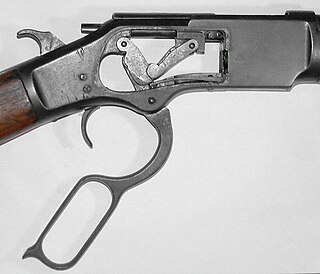
A lever action is a type of action for repeating firearms that uses a manually operated cocking handle located around the trigger guard area that pivots forward to move the bolt via internal linkages, which will feed and extract cartridges into and out of the chamber, and cock the firing pin mechanism. This contrasts to other type of repeating actions such as the bolt-action, pump-action, semi-automatic, fully automatic, and/or burst mode actions. A firearm using this operating mechanism is colloquially referred to as a levergun.

The .45 Colt (11.43×33mmR), is a rimmed, straight-walled, handgun cartridge dating to 1872. It was originally a black-powder revolver round developed for the Colt Single Action Army revolver. This cartridge was adopted by the U.S. Army in 1873 and served as an official US military handgun cartridge for 19 years, before being replaced by the .38 Long Colt in 1892.

The .303 British or 7.7×56mmR, is a .303-inch (7.7 mm) calibre rimmed rifle cartridge. The .303 inch bore diameter is measured between rifling lands as is the common practice in Europe which follows the traditional black powder convention.

The .32-20 Winchester, also known as .32 WCF , was the first small-game lever-action cartridge that Winchester produced. It was initially introduced as a black-powder cartridge in 1882 for small-game, varmint hunting, and deer. Colt produced a single-action revolver chambered for this cartridge a few years later.

A wildcat cartridge, often shortened to wildcat, is a custom cartridge for which ammunition and/or firearms are not mass-produced. These cartridges are often created in order to optimize a certain performance characteristic of an existing commercial cartridge, or may merely be intended as novelty items.
A rim is an external flange that is machined, cast, molded, stamped, or pressed around the bottom of a firearms cartridge. Thus, rimmed cartridges are sometimes called "flanged" cartridges. Almost all cartridges feature an extractor or headspacing rim, in spite of the fact that some cartridges are known as "rimless cartridges". The rim may serve a number of purposes, including providing a lip for the extractor to engage, and sometimes serving to headspace the cartridge.
The 7.62×45mm is a rimless bottlenecked intermediate rifle cartridge developed in Czechoslovakia. It is fired by the Czech Vz. 52 rifle, Vz. 52 light machine gun, and ZB-53 machine gun. The cartridge was later dropped from use when the Czech converted to the standard 7.62×39mm Warsaw Pact cartridge of the Soviet Union. Its muzzle velocity and muzzle energy are slightly higher than that of the 7.62×39mm cartridge, and is on par with the .30-30 Winchester cartridge, with equivalent projectiles.
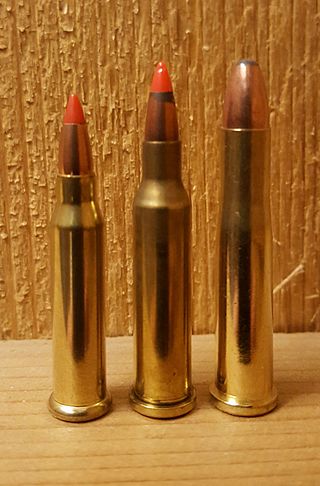
The .17 Hornet is a .17 caliber centerfire rifle cartridge originally offered as a "wildcat cartridge" developed by P.O. Ackley in the early 1950s. He created this non-factory (wildcat) offering by simply necking-down the .22 Hornet to .17 caliber and fire-forming the resized cases in his new chamber design. The result was a small quiet cartridge capable of high velocity. Ackley mentions it as one of the most balanced of the .17 cartridges of his time; likely, this is still true.
.32 caliber is a size of ammunition, fitted to firearms with a bore diameter of 0.32 inches (8.1 mm).
.22 caliber, or 5.6 mm caliber, refers to a common firearms bore diameter of 0.22 inch (5.6 mm).
The Martini Cadet is a centrefire single-shot cadet rifle produced in the United Kingdom by BSA and W.W. Greener for the use of Australian military Cadets. Although considered a miniature version of the Martini–Henry, the internal mechanism was redesigned by Auguste Francotte to permit removal from the receiver as a single unit. Chambered for the .310 Cadet cartridge, it was used from 1891 to 1955. They were also sold to the public thereafter, as the BSA No.4, 4a, 4b and 5 in other calibres like the .297/230 and .22 rimfire. The rifles will often chamber the similarly sized .32-20 Winchester and fire with some accuracy. However the 32/20 is actually 0.312 cal and the 310 is 0.323 cal. Due to this 10 thousandths difference the accuracy of a .32/20 round cannot be guaranteed.
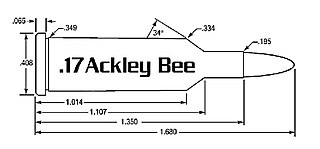
The .17 Ackley Bee is a wildcat centerfire rifle cartridge named after its designer, P.O. Ackley, and is a .218 Bee case necked down to .17 caliber with a squarer shoulder and less body taper. Being a rimmed case it was popular with single shot rifles such as the Martini Cadet and Low Wall Winchester. The caliber is well suited to varmint hunting particularly where minimal pelt damage is required.
The .300 Sherwood, also known as the .300 Extra Long and the .300 Westley, is an obsolete centerfire rifle cartridge developed by Westley Richards.

The .297/230 Morris Short and .297/230 Morris Long are two obsolete centerfire firearm cartridges developed as sub-caliber training rounds for the British Martini–Henry rifle.

A cadet rifle is a rifle used by military cadets and others for basic firearms and marksmanship training. Generally .22 caliber and bolt-action, they also come in semi-automatic versions. They are often miniature .22 caliber versions of standard issue service rifles.
